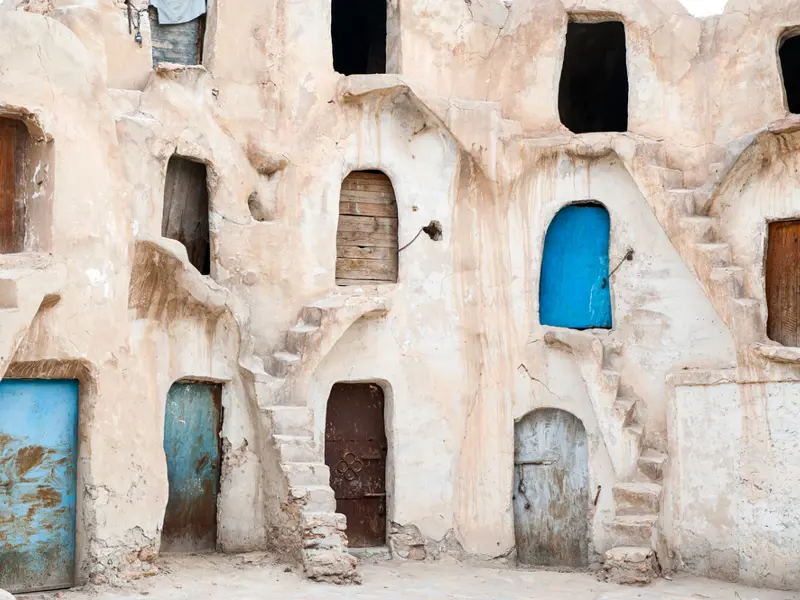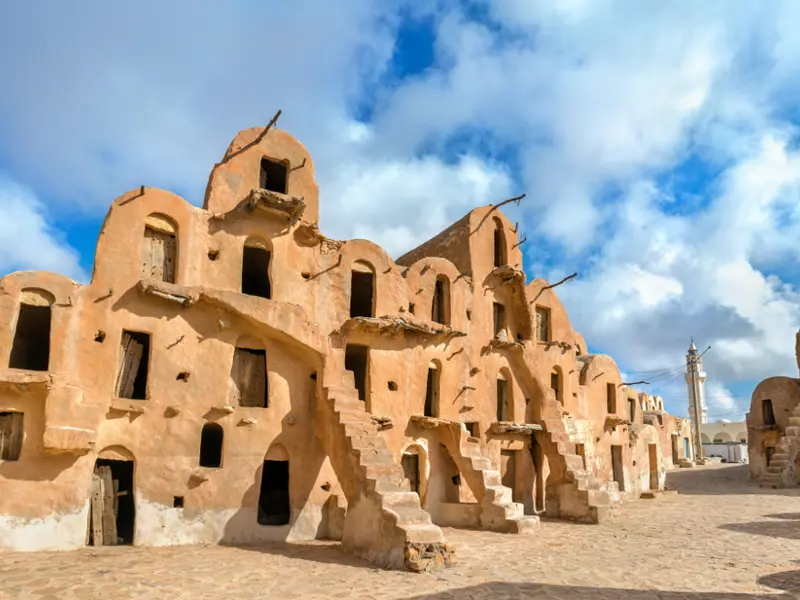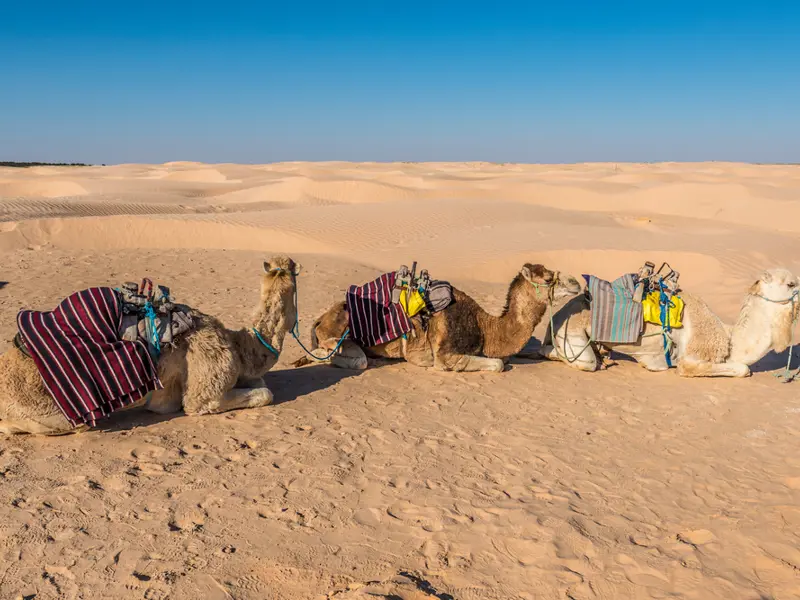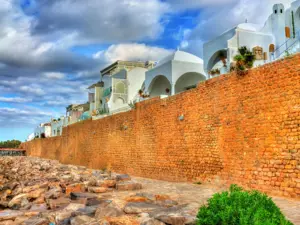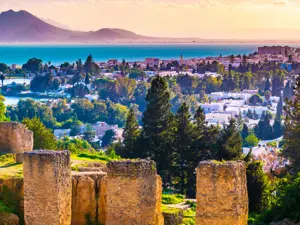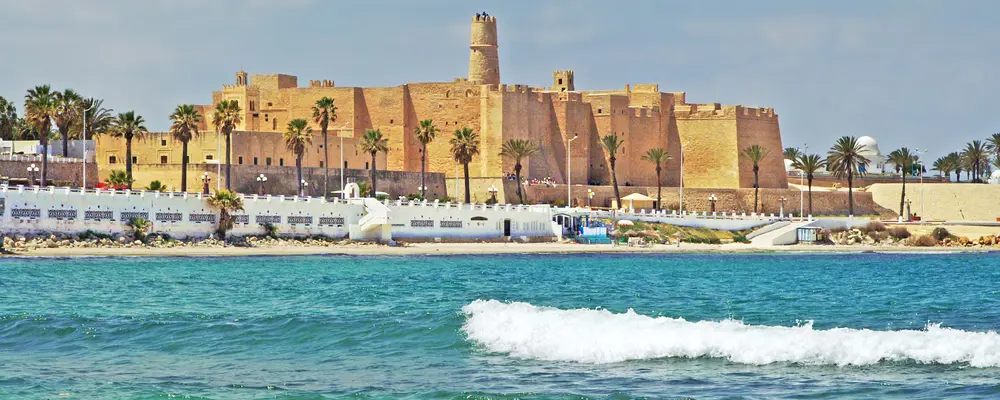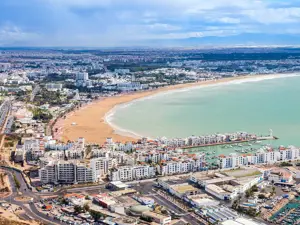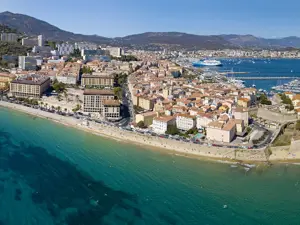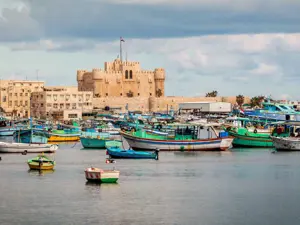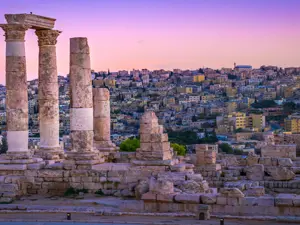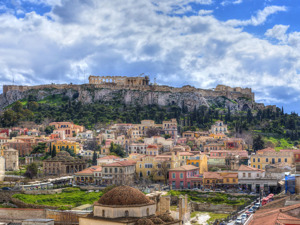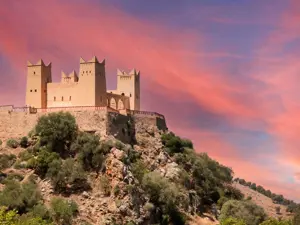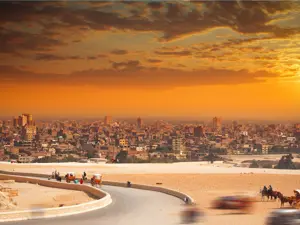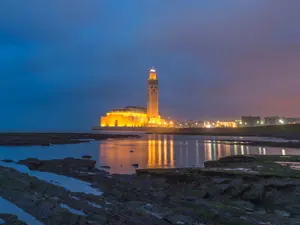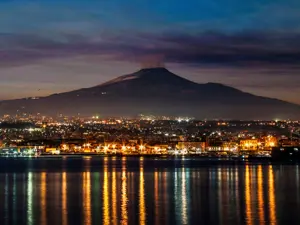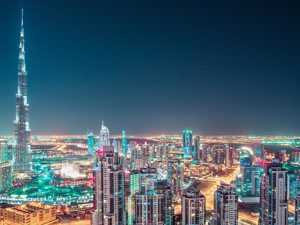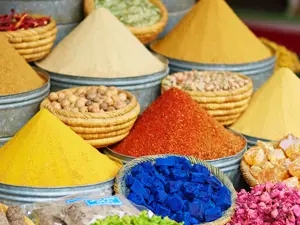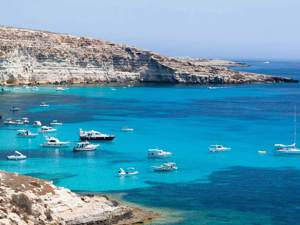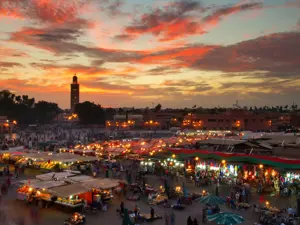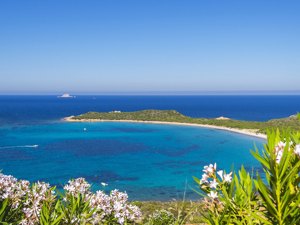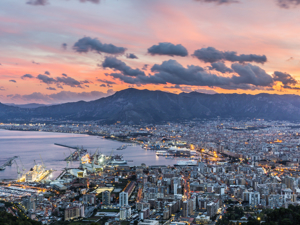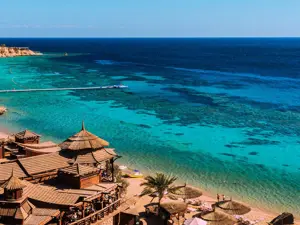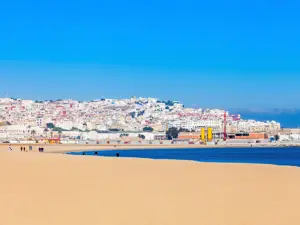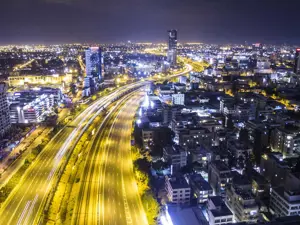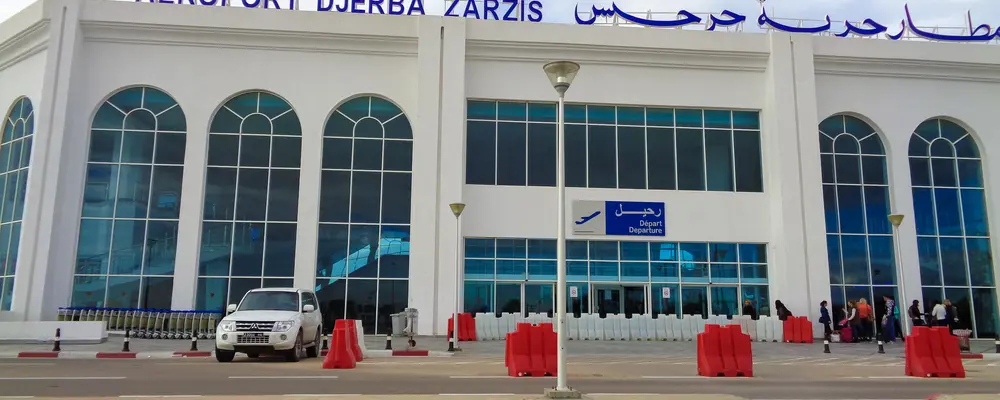The island with crystal clear waters covered with date palms
Djerba is a flat island of 614 km2, facing the southern coast of Tunisia and connected to the mainland by a causeway of 6 km. Its shoreline is lapped by crystal clear waters, and it is covered by date palms, three-thousand year old olive trees, and flowers and fruits of every Mediterranean species.
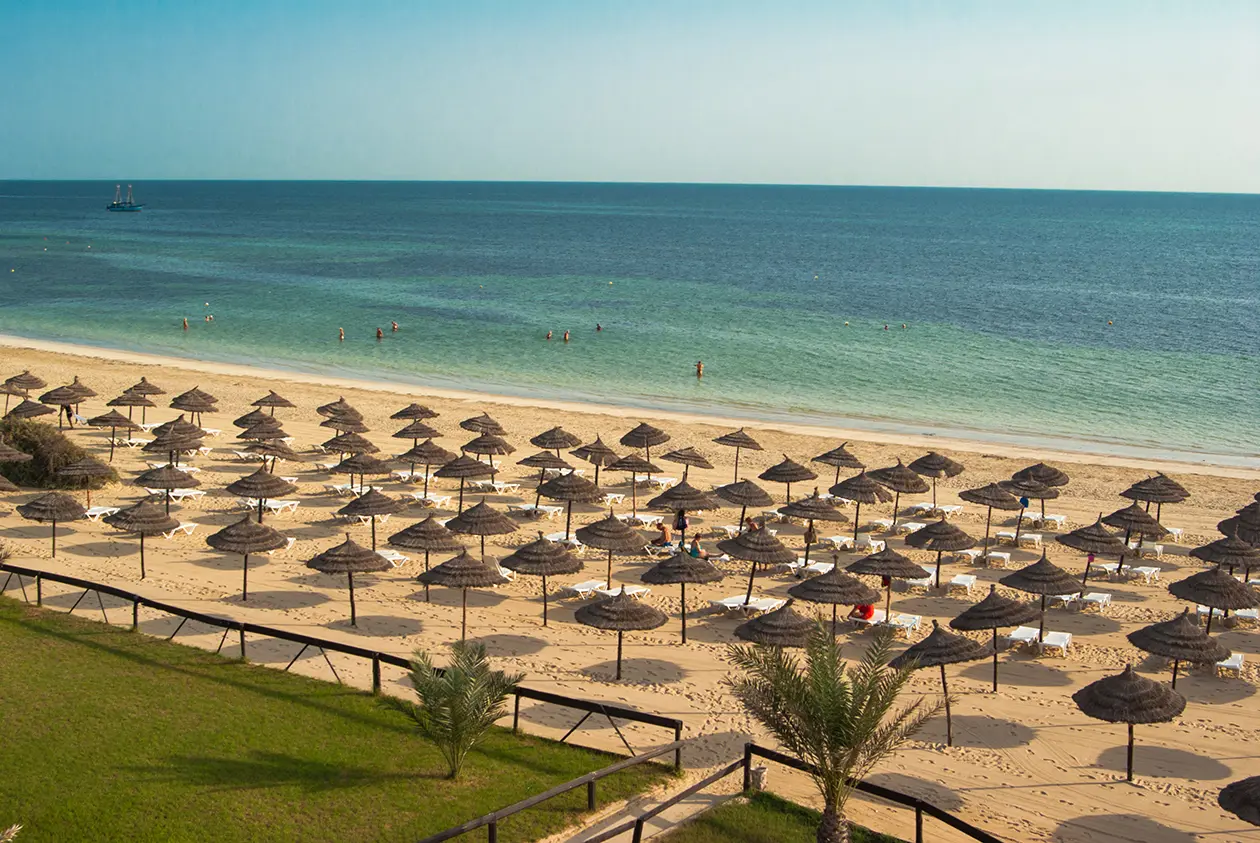
Here, among the magic of nature and time, resides mythology. In ancient times the island was known as Lotophagitis, the place where, in Homer’s Odyssey, Ulysses and his companions met the Lotophagi people or Lotus-Eaters. The island has lush vegetation, but no trace of the lotus flowers eaten by some of Ulysses’ companions, who then lost all memory of their past life.
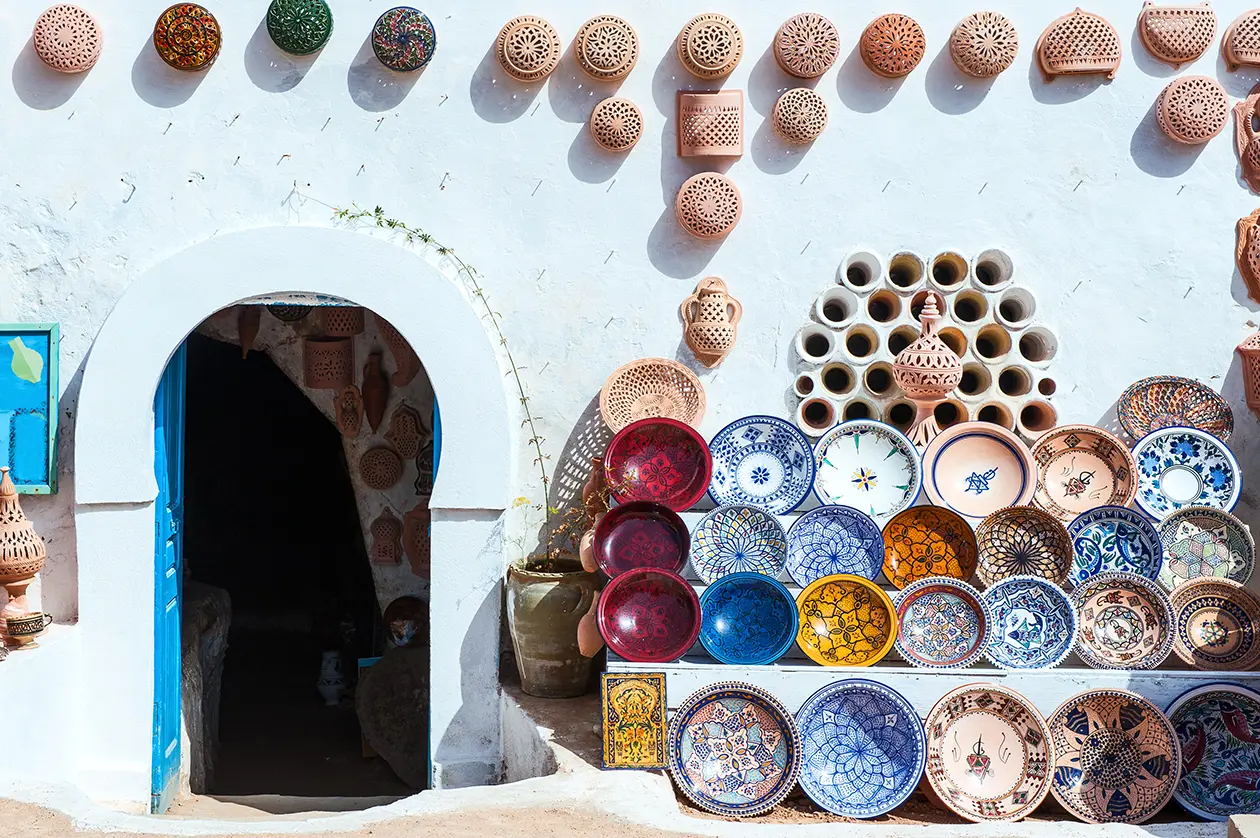
Whoever visits this oasis of peace and dreams will experience a magical relaxing atmosphere amidst brilliant white houses and verdant gardens. The island is also home to some 200 small mosques.
Houmt-Souk
Houmt-Souk is the most important town on the island of Djerba and one of the most picturesque in Tunisia. It is home to the unmistakeable Fundouks, inns with large courtyards surrounded by white arches where passing merchants would stay with their goods.
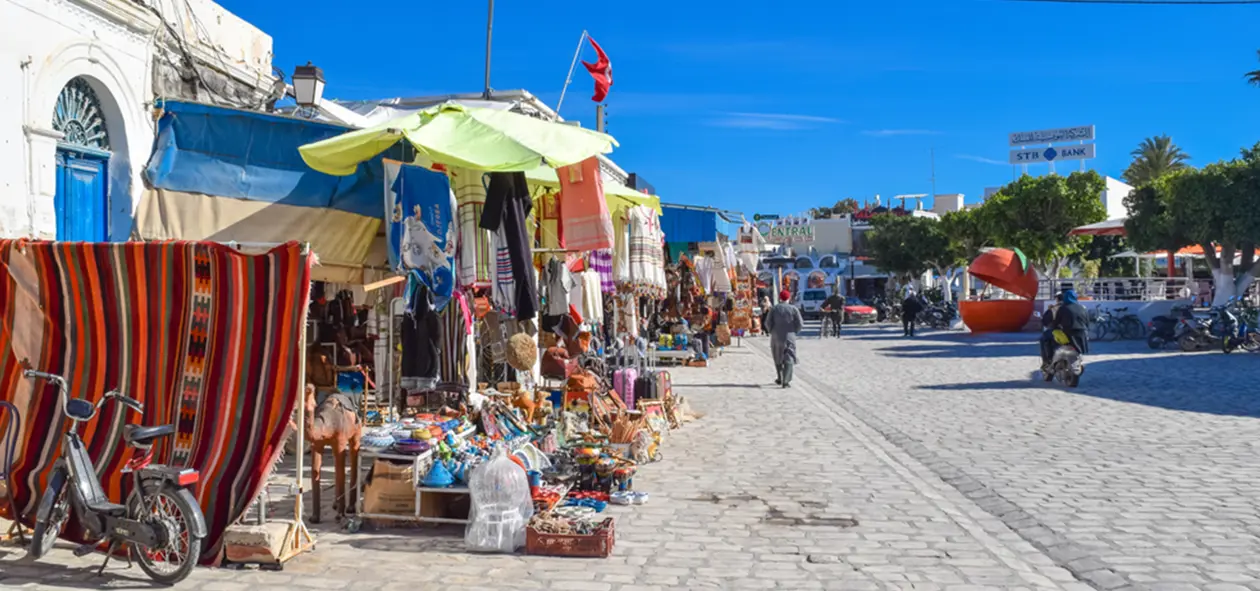
The town has developed around the souk, where you can find an impressive quantity and variety of local craft products such as traditional clothing, blankets woven in the same way since the time of Hannibal, hand-made gold and silver jewellery, leather goods, straw matting, ceramics and terracotta items.
To visit in Djerba
Places to visit include the Museum of Folklore and Popular Art, which exhibits traditional costumes and jewellery, and the Arab fortress of BorJ el-Kebir, dating back to the XV century.

The towns of the Djerba island
Each town on the island is known for particular handicrafts or is a place of historic importance: Ajiim for sponge fishing; El-May for its colourful market; Fatou for its finely woven baskets; Guellala, a centre for the production of hand-crafted ceramics and pottery since the time of King Midas; La Ghirba, for one of the oldest and most famous synagogues in the world; Mahbounine, the realm of gardens; Midoun, for its dance culture; Gougou and Sedouikech for hand-made camel muzzles, fish baskets and straw hats.
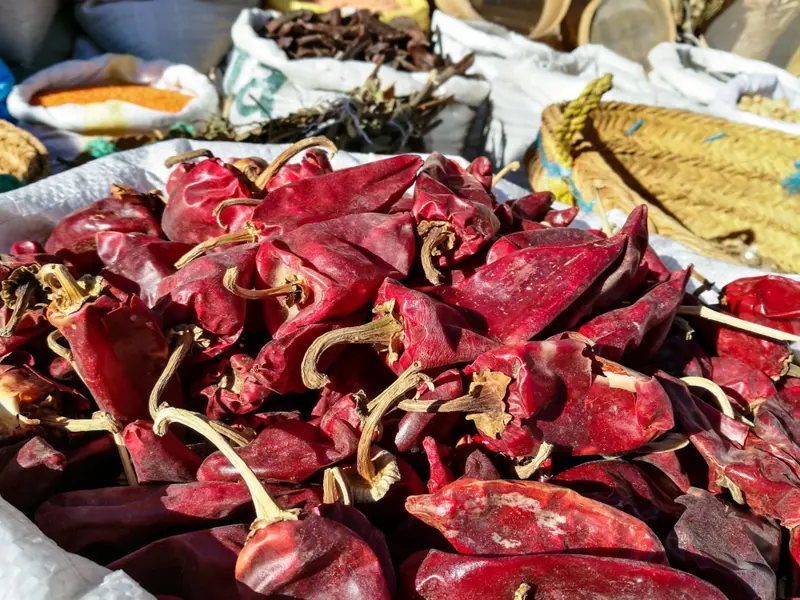
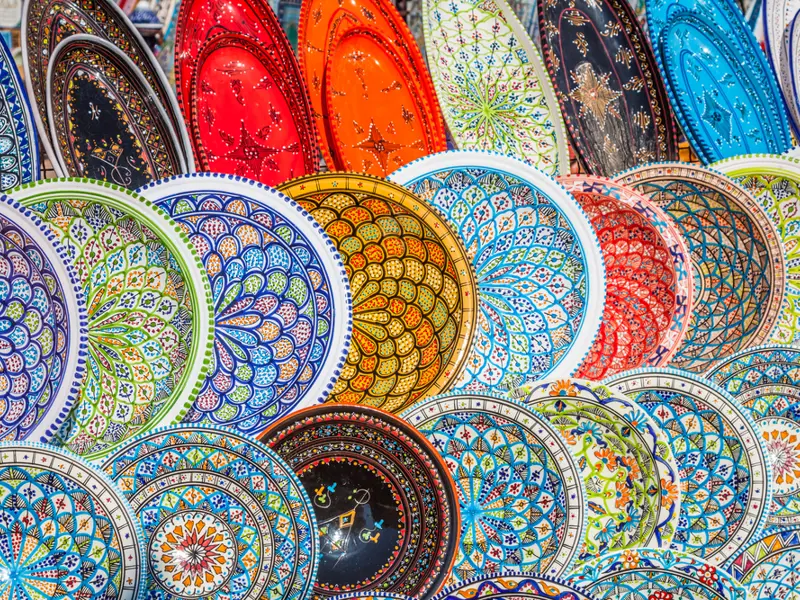
Copyright © Sisterscom.com, Shutterstock
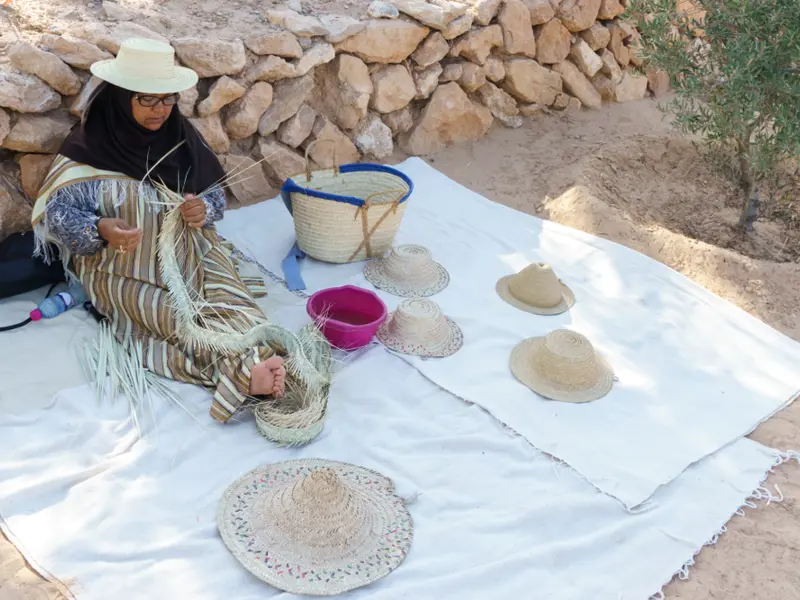
The south of Tunisia
Djerba is not just about white sandy beaches, azure sea and relaxation. It is also the starting point for a tour in discovery of southern Tunisia and its indisputable protagonist: the desert.
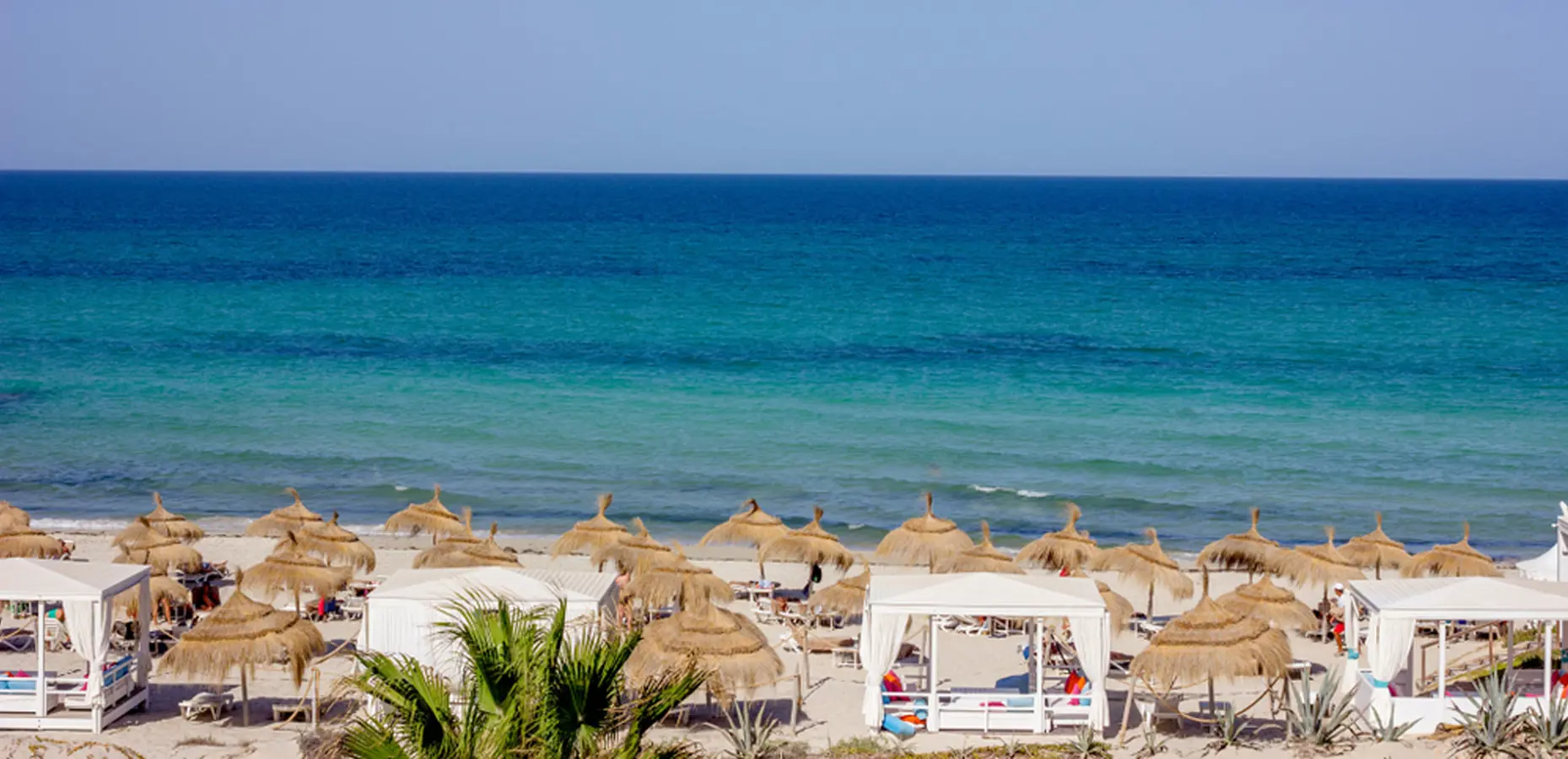
Beyond the Roman causeway, which leads to the mainland, lies Medenine with itsGhorfas (old granaries) and Tataouine, outpost of the famous French Foreign Legion. By day, on the back of a camel, you can enjoy a tour of the dunes around Douz. Don’t miss the magic of a night in the desert under the stars.
By four-wheel drive vehicle, you can visit the magnificent mountain oases of Chebiba, Mides and Tamerza, with their flourishingpalm groves, legendary Tozeur, the main town of the south with its characteristic ochre-coloured houses, or submerge yourself in the sulphurous waters of the oasis of Ksar Ghilane, situated in the deep south and surrounded by desert. Tozeur is an immense palm grove of 1000 hectares where almost 260,000 palm trees, irrigated by 200 springs, produce the best dates in Tunisia.
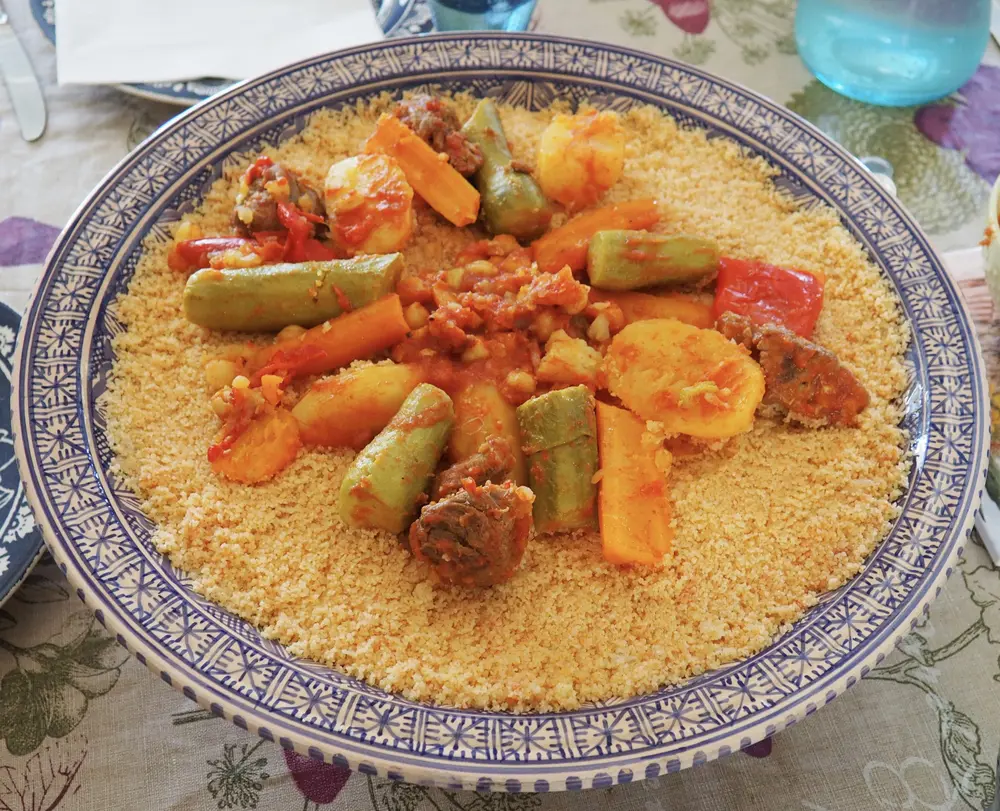
The tipical dishes of Tunisia
Lamb and fish are the staple ingredients of Tunisian cuisine. Another very well known food is couscous, which accompanies all types of dishes. Brik pastry and mechouia salad with tomatoes and peppers are appetising starters, as are fresh bread and sauces, sardines, olives, roast green peppers and harissa (chilli sauce). Dates are a genuine speciality. Typical drinks include mint tea and Turkish coffee.
Text by Angela Trivigno
Avion Tourism Magazine
Photo: Copyright © Sisterscom.com / Shutterstock
Photo: Copyright © Sisterscom.com / Shutterstock
Reproduction reserved.
Tourism Board
www.tunisiaturismo.it
www.discovertunisia.com
Partnership with Booking.com
Where to sleep in Djerba

Djerba is a welcoming city and offers different possibilities for accommodation.
To find the ideal hotel and the best offers you can do a search for the stars but also for districts or landmarks.
WHERE TO GO in Djerba
Monuments and Museums in Djerba
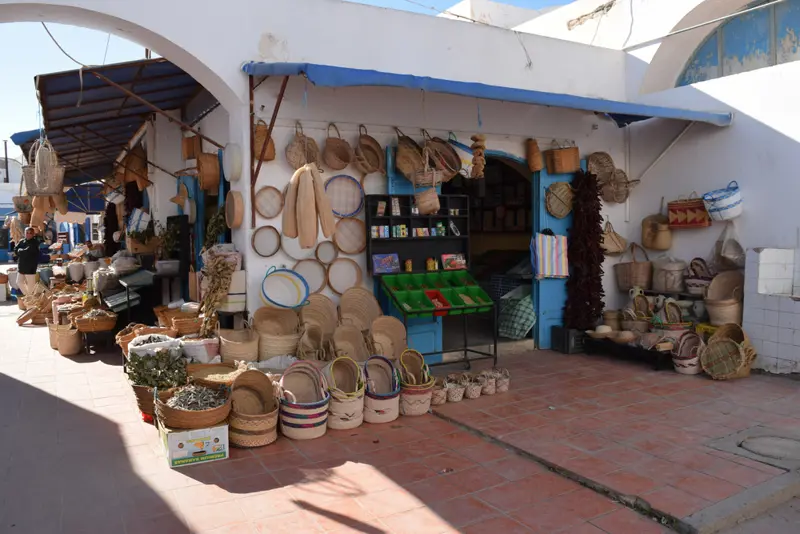
HOUMT-SOUK
Houmt-Souk, which in local language means “market place”, with a population of around fifty thousand people, is now the capital of the island and one of the most picturesque towns in Tunisia. Houmt-Souk delights tourists with intricate streets rich with oriental treasures, small cafes and an impressive quantity and variety of local handicrafts. The long stretch of souk is an excellent place to purchase fabrics worn by many of the local women, blankets woven here since the time of Hannibal, gold and silver jewelry from artisanal workings,leather goods, straw mats, pottery and terracotta.
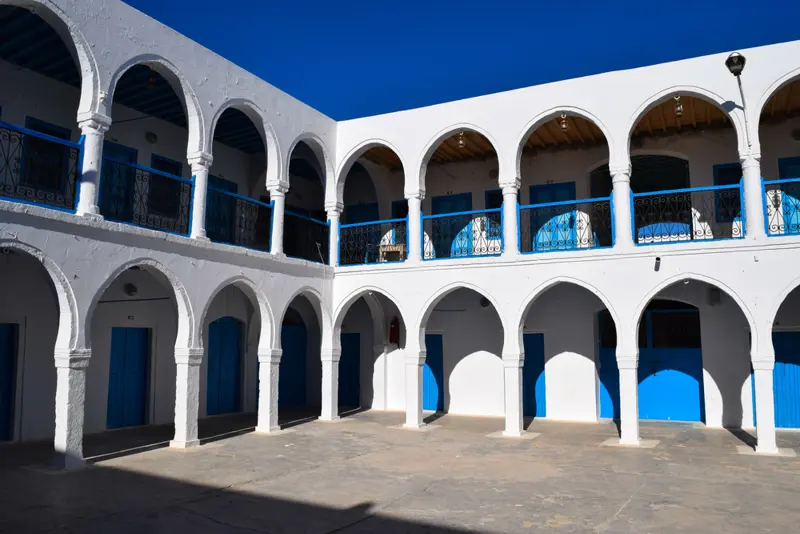
SINAGOGA GHIRBA
Djerba is home to one of the oldest Jewish communities in the world. The El Ghriba synagogue in Hara Seghira is one of the oldest and most famous in the world for the monastery adjoining the foundations of which stands on a site dating back to 586 B.C; synagogue and monastery on the island testify the presence of a Jewish minority that has lived here for centuries or even millennia.
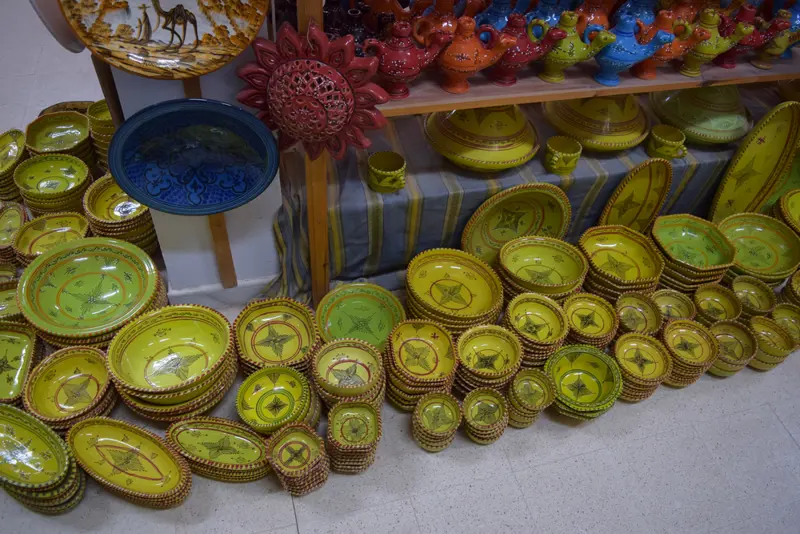
EL-MAY, FATOU, GUELLALA
El-May is a colorful market, while Fatou produces beautifully woven baskets and rush mats. In the town of Guellala, exquisite pottery and ceramics have been hand manufactured since the time of King Midas.
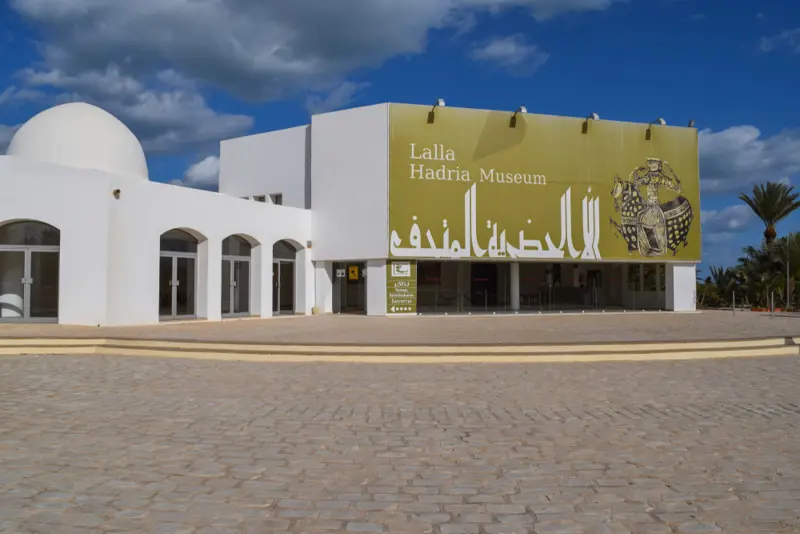
DJERBA EXPLORE
Route touristique de Midoun - Midoun
In addition to the interesting Museum Lalla Hadria, which includes over 1000 years of art and history, the park allows you to take a step back in time by visiting Menzel and discovering ancient traditional crafts such as carpet weaver or artisan who works wicker. The world of Djerba Explore, is a unique and innovative project in the Mediterranean basin. Culture and history, relaxation and entertainment are fantastically mixed. www.djerbaexplore.com
In addition to the interesting Museum Lalla Hadria, which includes over 1000 years of art and history, the park allows you to take a step back in time by visiting Menzel and discovering ancient traditional crafts such as carpet weaver or artisan who works wicker. The world of Djerba Explore, is a unique and innovative project in the Mediterranean basin. Culture and history, relaxation and entertainment are fantastically mixed. www.djerbaexplore.com
MUSEE DU PATRIMOINE
Avenue Habib Thameur Houmet Essouk
The Musee du Patrimoine in Djerba is a must-stop that allows you to discover the ancient traditions, customs and traditions of the island of Tunisia. The Museum lends itself to this informative and sensitizing role and invites you to discover the treasures of rich culture of the island.
www.djerbamuseum.tn
The Musee du Patrimoine in Djerba is a must-stop that allows you to discover the ancient traditions, customs and traditions of the island of Tunisia. The Museum lends itself to this informative and sensitizing role and invites you to discover the treasures of rich culture of the island.
www.djerbamuseum.tn
Excursions in Djerba

DJERBA GOLF CLUB
Midoun Djerba
The Djerba Golf Club was designed by Martin Hawtree and opened in November 1994. The path of the Djerba Golf Club, 120 acres, runs about 27 holes between date palms, acacia trees and ponds of brackish water. Some fairways do not exceed the width of 40 meters and the route ends at the seaside.
The Djerba Golf Club was designed by Martin Hawtree and opened in November 1994. The path of the Djerba Golf Club, 120 acres, runs about 27 holes between date palms, acacia trees and ponds of brackish water. Some fairways do not exceed the width of 40 meters and the route ends at the seaside.
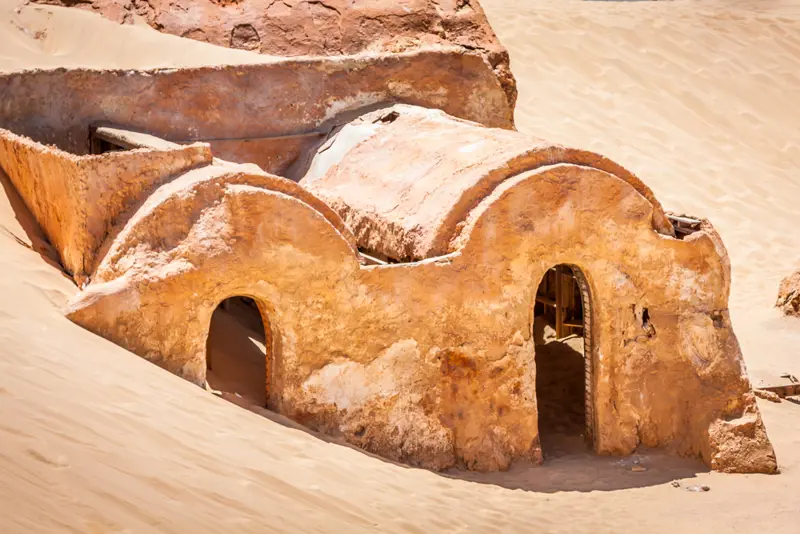
TATOUINE
With a jeep is possible to go inland and reach Tatouine, a city known for its Berber architecture unique in the world. The city is made up of "ksours", the old barns that have become a stronghold of the Berber people, now charming and mysterious. Tatouine is also famous for scenes from the Star Wars movies, filmed in this area.
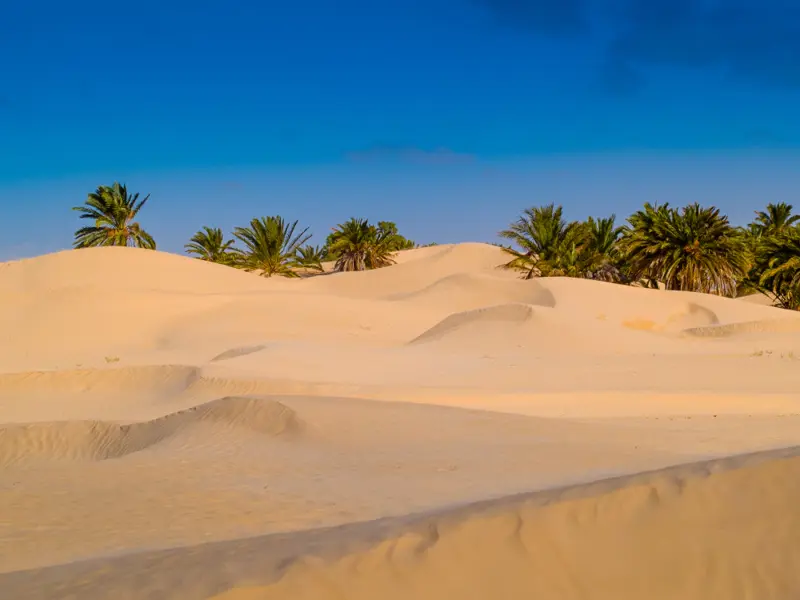
DOUZ
Near the salt Lake of Chott el Jerid, you get to Douz, the "gateway to the Sahara." The city is housed in what was once the most important oasis of the area and from this point start most of the shipments to discovery the Sahara. Douz is celebrated every year the famous “Festival of the Sahara”, a unique event in the world to discover the history of this fascinating country.
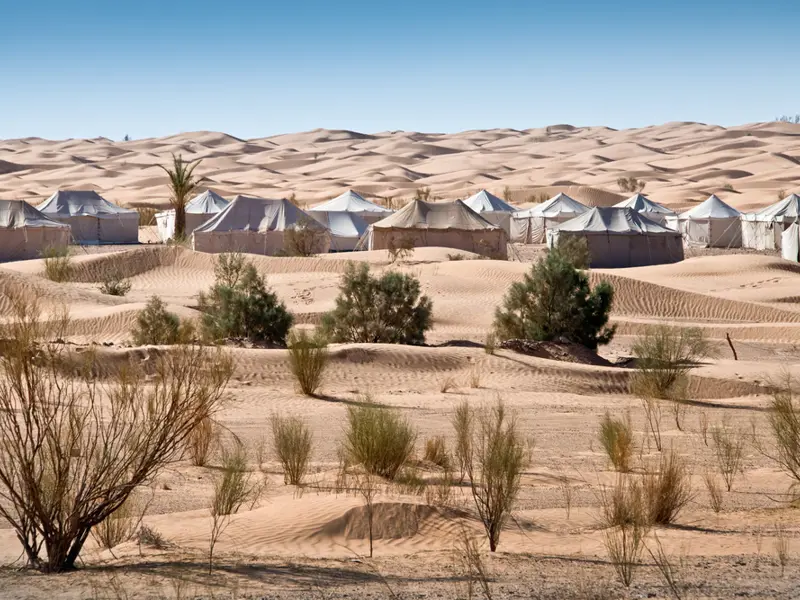
NATIONAL PARKS: SIDI TOUI AND JEBIL
The south of Tunisia is home to the National Parks Sidi Toui and Jebil. The first extends for over 63 kilometers, where the plains are alternated with small dunes, river beds, semi-arid areas and the relief of the Djebel Sidi Toui. The National Park Jebil instead is the largest of Tunisia and extends for about 1,500 miles to the border of the Grand Erg Oriental. The park includes a beautiful desert landscape with sand dunes over 200 meters.
Partnership with GetYourGuide
All tours and excursions
Shopping
You might be interested in
Destinations found in the vicinity
Other destinations
Airports nearby Djerba

